Immortal Tattoo: Eternal Designs and Meanings That Last Forever (2025)
- Leonardo Pereira

- Jul 17
- 16 min read
Updated: Nov 10
Immortal tattoo designs represent humanity's eternal quest to transcend mortality through permanent body art.
These powerful immortal tattoos symbolize everlasting love, spiritual transcendence, and the desire to create lasting legacies that outlive our physical existence.
Whether you're seeking immortal tattoo meanings rooted in mythology, religion, or personal philosophy, these timeless designs offer profound ways to express your beliefs about eternity, legacy, and the enduring nature of human spirit.
Table of Contents
Immortal Tattoo Meanings and Symbolism
The Philosophy Behind Immortal Tattoos
Immortal tattoo symbolism draws from humanity's oldest philosophical questions about life, death, and what lies beyond.
These immortal tattoos represent our desire to create something permanent in an impermanent world.
Immortal tattoos tap into humanity's most profound questions about life, death, and existence beyond our physical experience.
These designs serve as permanent reminders of eternal concepts, creating visible connections to ideas that transcend our limited lifespans.
At their core, these tattoos represent our fascination with overcoming death—whether through eternal life or through legacy, memory, and spiritual continuation.
Core immortal tattoo meanings:
Eternal love that transcends death
Spiritual transcendence and enlightenment
Legacy preservation for future generations
Defiance of mortality and temporal limitations
Connection to infinite cosmic forces
Philosophical foundations:
Ancient Greek concepts of immortality
Eastern philosophy of eternal cycles
Christian beliefs in eternal life
Modern existential perspectives
Personal mortality acceptance and transcendence
Cultural Interpretations of Immortal Tattoos
Immortal tattoo meanings vary significantly across different cultures, each offering unique perspectives on eternity and transcendence.
The symbolism of immortality appears in various visual forms across tattoo traditions. The infinity symbol (∞) represents mathematical immortality—a concept without beginning or end. The ouroboros, showing a serpent eating its own tail, symbolizes cyclical existence and eternal return.
Phoenix imagery represents immortality through rebirth and transformation.
The ankh symbolizes eternal life force, while lotus flowers represent spiritual immortality and enlightenment.
Immortal tattoos often incorporate specific elements that visually reinforce concepts of eternity. Circular compositions suggest endless cycles without beginning or end. Flowing water imagery represents the continuous stream of life that changes form but never stops.
Western immortal tattoo interpretations:
Greek mythology and eternal gods
Christian eternal life symbolism
Celtic knots representing endless cycles
Modern scientific concepts of energy conservation
Romantic ideals of everlasting love
Eastern immortal tattoo concepts:
Buddhist concepts of enlightenment and nirvana
Hindu beliefs in soul immortality and reincarnation
Taoist principles of harmony with eternal nature
Chinese symbols of longevity and eternal life
Japanese concepts of honor transcending death
Personal Immortal Tattoo Significance
Individual immortal tattoo meanings often reflect personal experiences with loss, love, and the desire to create lasting impact through meaningful relationships and achievements.
Personal interpretation ultimately determines an immortal tattoo's significance. Some choose these designs to represent spiritual beliefs about afterlife or reincarnation.
Others use them to symbolize the immortality of ideas, art, or genetic legacy. Some select immortal tattoos to represent recovery after trauma, symbolizing their own phoenix-like rebirth.
The most meaningful designs emerge from thoughtful connection between universal symbols and personal significance.
Personal immortal tattoo motivations:
Honoring deceased loved ones' eternal impact
Celebrating enduring relationships and bonds
Expressing spiritual beliefs about afterlife
Marking personal transformation and growth
Creating tangible connection to infinite concepts
Popular Immortal Tattoo Designs
Infinity Symbol Immortal Tattoos
Infinity immortal tattoos use the mathematical symbol ∞ to represent endless time, space, and possibility. These versatile immortal tattoo designs work beautifully alone or incorporated into larger pieces.
The basic infinity symbol (∞) represents mathematical immortality—a concept without beginning or end.
Artists have developed numerous variations: infinity symbols incorporating names to represent eternal bonds, infinity loops formed from significant words, or infinity symbols integrated with natural elements like feathers or heartbeats.
Their clean lines and recognizable form make them suitable for various placements from visible wrists to more private locations.
Infinity immortal tattoo variations:
Simple infinity symbol in black ink
Double infinity for enhanced meaning
Infinity with names for eternal love
Infinity with hearts for romantic symbolism
Infinity with feathers for spiritual freedom
Infinity design enhancements:
Watercolor effects for artistic appeal
Geometric patterns for modern aesthetics
Script integration for personalized meaning
Fine line work for delicate appearance
Color gradients for visual impact
For delicate infinity work, explore our fine line tattoo guide for inspiration.
Ouroboros Immortal Tattoos
Ouroboros immortal tattoos feature the ancient symbol of a serpent eating its own tail, representing eternal cycles, renewal, and the infinite nature of existence.
The ouroboros represents one of the oldest immortality symbols in tattoo art. Dating back to Ancient Egyptian iconography, this circular symbol represents eternal cyclical existence where endings become beginnings.
Unlike the phoenix's dramatic transformation, the ouroboros represents immortality through perfect continuity.
Tattoo designs range from minimalist interpretations to elaborate compositions with detailed scales or cosmic backgrounds. The circular nature makes it ideal for wrapping around limbs or encircling other symbolic elements.
Ouroboros design elements:
Traditional circular serpent design
Dragon ouroboros for enhanced power symbolism
Floral ouroboros with botanical elements
Geometric ouroboros with modern styling
Celtic ouroboros with knot work integration
Ouroboros symbolism includes:
Eternal return and cyclical time
Death and rebirth cycles
Unity of opposites
Self-reflection and introspection
Cosmic harmony and balance
Phoenix Immortal Tattoos
Phoenix immortal tattoos symbolize rebirth, renewal, and the triumph of spirit over physical destruction.
These powerful immortal tattoo designs represent the soul's ability to transcend death and emerge stronger.
The phoenix stands as perhaps the most recognizable immortality symbol in tattoo art, representing triumph over death through cyclical rebirth.
This mythical bird, which burns itself to be reborn from its ashes, appears across diverse cultural traditions from Ancient Egypt to China.
Phoenix tattoos typically show the bird in flames, emerging from ashes, or in triumphant flight. These dramatic designs work well for larger placements like back pieces or chest tattoos where artists can develop the narrative of destruction and rebirth.
Phoenix immortal tattoo styles:
Realistic phoenix with detailed feathers
Traditional phoenix with bold lines
Watercolor phoenix with flowing colors
Minimalist phoenix silhouette
Japanese phoenix (Ho-oh) styling
Phoenix placement considerations:
Back pieces for full wingspan display
Shoulder tattoos for rising symbolism
Chest placement for heart connection
Arm sleeves for narrative flow
Thigh pieces for detailed work
Tree of Life Immortal Tattoos
Tree of Life immortal tattoos represent the connection between earth and heaven, the cycle of seasons, and the enduring nature of family roots and spiritual growth.
This symbol appears across diverse traditions—from Norse mythology's Yggdrasil to the Kabbalistic Tree of Life. These tattoos typically show a tree with elaborate root systems mirroring their branches, suggesting that what exists below mirrors what exists above.
Many designs incorporate circular compositions or symbolic elements like fruits representing genetic continuation.
These organic forms work especially well on body areas with natural contours like the back or sides.
Tree of Life design variations:
Celtic Tree of Life with intricate knotwork
Realistic tree with detailed bark and leaves
Geometric tree with modern styling
Seasonal tree showing life cycles
Family tree with names and dates
Tree of Life symbolism:
Family connections and ancestry
Spiritual growth and enlightenment
Connection between earth and divine
Strength and resilience through challenges
Seasonal cycles and renewal
Consider combining Tree of Life designs with birth flower tattoos representing family members' birth months.
Eternal Flame Immortal Tattoos
Eternal flame immortal tattoos symbolize the undying spirit, passion that never dies, and the light that continues beyond physical existence.
Eternal flame design options:
Olympic torch style flames
Candle flame with melting wax
Sacred flame with religious elements
Heart flame for eternal love
Memorial flame for remembrance
Flame color symbolism:
Blue flames for spiritual purity
Red flames for passion and love
White flames for divine connection
Purple flames for mystical energy
Golden flames for enlightenment
Mythological Immortal Tattoo Ideas
Greek Mythology Immortal Tattoos
Greek mythology immortal tattoos draw from stories of gods, heroes, and mythical creatures that embody different aspects of immortality and eternal power.
Classical mythology provides dramatic immortality imagery for tattoo art. Greek-inspired designs feature the phoenix (adopted from Egyptian traditions), ambrosia and nectar symbolizing divine immortality, or the River Styx representing the boundary between mortal and immortal realms.
Popular Greek immortal figures:
Zeus for supreme divine power
Athena for eternal wisdom
Apollo for artistic immortality
Hercules for legendary strength
Pegasus for transcendent freedom
Greek immortal symbols:
Ambrosia (food of the gods)
Golden fleece for eternal protection
Laurel wreaths for lasting victory
Greek keys for eternal patterns
Olympian symbols for divine connection
Norse Mythology Immortal Tattoos
Norse mythology immortal tattoos feature powerful symbols from Viking culture representing honor, valor, and the warrior's path to eternal glory in Valhalla.
Norse mythology contributes Yggdrasil (the World Tree connecting nine realms), Valknut symbols representing fallen warriors' immortality in Valhalla, and Jörmungandr (the world serpent) as another form of the ouroboros concept.
Norse immortal symbols:
Valknut (Odin's knot) for eternal warrior spirit
Yggdrasil (World Tree) for cosmic connection
Ravens (Huginn and Muninn) for eternal wisdom
Mjolnir (Thor's hammer) for divine protection
Ouroboros in Norse styling
Norse immortal concepts:
Valhalla and eternal warrior paradise
Ragnarok and cyclical destruction/renewal
Einherjar (chosen slain) eternal honor
Runes for magical eternal power
Viking honor transcending death
Egyptian Mythology Immortal Tattoos
Egyptian mythology immortal tattoos incorporate ancient symbols of eternal life, divine protection, and the journey through death to immortal existence.
Ancient Egyptian immortality symbols, particularly the ankh and scarab beetle, offer connections to one of history's most sophisticated afterlife traditions. The ankh—a cross with a looped top—represented the key of life, symbolizing eternal life force.
The scarab beetle became associated with continuous renewal and rebirth.
These ancient symbols appeal to those drawn to historical connections in their immortality tattoos, creating immediately recognizable designs with thousands of years of symbolic meaning.
Egyptian immortal symbols:
Ankh for eternal life
Eye of Horus for divine protection
Scarab beetle for rebirth and renewal
Phoenix (Bennu bird) for resurrection
Djed pillar for eternal stability
Egyptian immortal deities:
Anubis for death and afterlife guidance
Isis for magical resurrection power
Osiris for eternal judgment and rebirth
Ra for solar immortality
Thoth for eternal wisdom and knowledge
Religious and Spiritual Immortal Tattoos
Christian Immortal Tattoo Designs
Christian immortal tattoos express faith in eternal life through Jesus Christ and the promise of resurrection and heavenly existence.
Islamic-influenced geometric patterns represent mathematical immortality and divine eternal order, though figurative representations remain uncommon due to traditional restrictions.
Indigenous cultures worldwide have developed powerful immortality symbols now appearing in respectful tattoo adaptations.
Native American-inspired designs feature thunderbirds representing spiritual power transcending death, medicine wheels symbolizing the eternal cycle of existence, and spirit animals representing immortal aspects of human nature.
Christian immortal symbols:
Cross for eternal salvation
Resurrection scenes with Jesus
Angels for divine messengers
Dove for Holy Spirit
Alpha and Omega for eternal God
Christian immortal verses:
John 3:16 for eternal life promise
1 Corinthians 15:55 for death's defeat
Revelation 21:4 for eternal comfort
Romans 6:23 for eternal life gift
Philippians 3:20-21 for transformation
Buddhist Immortal Tattoo Concepts
Buddhist immortal tattoos represent the path to enlightenment, liberation from suffering, and the eternal nature of consciousness.
In Buddhist traditions, the lotus represents purification through the cycle of rebirth toward liberation from mortality. Color choices carry specific meanings—white lotuses representing spiritual perfection, blue indicating wisdom's triumph over sensory pleasure.
These designs appeal to those seeking immortality tattoos connected to spiritual practice and transcendence.
Buddhist-inspired designs feature lotus flowers representing spiritual rebirth, endless knot patterns symbolizing eternal interconnection, and wheel of dharma imagery representing the cycle of death and rebirth.
Buddhist immortal symbols:
Lotus flower for spiritual rebirth
Dharma wheel for eternal teachings
Buddha figures for enlightenment
Endless knot for infinite wisdom
Om symbol for cosmic consciousness
Buddhist immortal concepts:
Nirvana as eternal liberation
Karma and eternal consequences
Reincarnation and soul continuity
Mindfulness and eternal present
Compassion as eternal virtue
Hindu Immortal Tattoo Designs
Hindu immortal tattoos explore concepts of eternal soul (Atman), divine consciousness (Brahman), and the cyclical nature of existence.
Hindu-influenced tattoos incorporate om symbols representing the eternal cosmic vibration and multi-armed deities symbolizing divine immortality.
Hindu immortal symbols:
Om for cosmic consciousness
Lotus for spiritual purity
Trishul (Shiva's trident) for divine power
Chakras for eternal energy centers
Mandala for cosmic order
Hindu immortal deities:
Shiva for destruction and renewal
Vishnu for preservation and protection
Ganesha for obstacle removal
Krishna for divine love
Hanuman for devotional strength
Memorial Tattoo Ideas for Immortal Remembrance

Combining Memorial and Immortal Concepts
Memorial tattoo ideas that incorporate immortal tattoo symbolism create powerful tributes that celebrate the eternal impact of deceased loved ones while providing comfort through beliefs about continuing existence.
Memorial immortal tattoo combinations:
Portrait with angel wings for spiritual transcendence
Names with infinity symbols for eternal love
Dates with eternal flame for undying memory
Quotes with immortal symbols for lasting wisdom
Photos with phoenix imagery for spiritual rebirth
Memorial immortal design elements:
Heavenly scenes with deceased loved ones
Guardian angel representations
Eternal garden with favorite flowers
Cosmic imagery for universal connection
Religious symbols for faith-based comfort
Immortal Memorial Portrait Tattoos
Immortal memorial portrait tattoos combine realistic representations of deceased loved ones with symbolic elements representing their eternal presence and continuing influence.
Portrait immortal combinations:
Portrait with halo for saintly representation
Portrait with wings for angelic transformation
Portrait with light rays for divine presence
Portrait with stars for cosmic connection
Portrait with clouds for heavenly residence
Technical considerations:
High-quality reference photos essential
Experienced portrait artist required
Larger placement for detailed work
Multiple sessions often necessary
Color vs. black and gray decisions
Immortal Text Memorial Tattoos
Immortal text memorial tattoos incorporate meaningful words, quotes, or verses that express beliefs about eternal love, continuing bonds, and spiritual transcendence.
Immortal memorial text ideas:
"Forever in my heart" with heart symbols
"Until we meet again" with reunion imagery
"Love never dies" with eternal symbols
"Guardian angel" with wing elements
"In loving memory" with immortal designs
Text design considerations:
Font selection for readability and aesthetics
Size planning for aging and clarity
Placement for visibility and meaning
Integration with symbolic elements
Language choices for personal significance
For more comprehensive memorial ideas, explore our detailed memorial tattoo ideas guide.
Family Legacy Immortal Tattoos
Family legacy immortal tattoos celebrate the continuing influence of family bonds, traditions, and values that transcend individual lifetimes.
Family immortal design concepts:
Family tree with eternal roots
Multiple birth flowers for family members
Generational quotes and wisdom
Heritage symbols and cultural elements
Protective symbols for family unity
Legacy immortal elements:
Ancestral symbols and cultural heritage
Family mottos and guiding principles
Generational photos and portraits
Traditional patterns and designs
Protective imagery for family bonds
Immortal Tattoo Placement and Sizing
Strategic Placement for Immortal Tattoos
Immortal tattoo placement should reflect the eternal significance and personal meaning of these powerful designs while considering visibility, professional impact, and aesthetic flow.
Meaningful immortal tattoo placements:
Over the heart for eternal love and connection
Spine for backbone strength and support
Shoulder blades for protective symbolism
Forearm for daily reminder and visibility
Ribcage for intimate personal meaning
Large canvas immortal placements:
Back pieces for comprehensive immortal scenes
Chest panels for prominent eternal statements
Sleeve tattoos for narrative immortal stories
Thigh pieces for detailed immortal artwork
Calf areas for vertical immortal designs
Size Considerations for Immortal Tattoos
Immortal tattoo sizing should accommodate the complexity and symbolic importance of eternal designs while ensuring long-term clarity and impact.
Small immortal tattoo options (2-4 inches):
Simple infinity symbols
Small ankh or cross designs
Minimalist phoenix silhouettes
Basic eternal flame imagery
Simple immortal text
Medium immortal tattoo sizes (4-8 inches):
Detailed ouroboros designs
Tree of life with intricate elements
Phoenix with spread wings
Memorial portraits with immortal symbols
Complex infinity designs with additions
Large immortal tattoo projects (8+ inches):
Full phoenix back pieces
Comprehensive Tree of Life designs
Mythological scene immortal tattoos
Memorial sleeve with immortal themes
Religious immortal narrative pieces
Consider how your immortal tattoo might integrate with existing work or future plans for chest tattoos or other body art.
Immortal Tattoo Costs and Investment

The placement of immortal tattoos significantly impacts both their visual presentation and symbolic meaning.
The visibility of immortal tattoos carries significant meaning regarding the wearer's relationship with these concepts. Highly visible placements suggest public identification with immortality principles and willingness to engage in conversation about these profound ideas.
Semi-visible placements allow for situational display—revealed in certain contexts while covered in others.
Private placements create personal talismans visible primarily to the wearer and intimate partners, often representing deeply personal connections to eternal concepts.
Small Immortal Tattoo Pricing
These small designs often appear on fingers, behind ears, or on wrists, creating intimate connections to immortality concepts visible primarily to the wearer.
Small immortal tattoos typically range from $150-400 depending on complexity and symbolic detail:
Simple infinity symbol: $150-250
Basic ankh or cross: $180-280
Minimalist phoenix: $200-300
Small eternal flame: $160-240
Simple immortal text: $150-350
Medium Immortal Tattoo Costs
Medium-sized immortal tattoos balance visibility with personal significance, large enough for meaningful detail while remaining appropriate for selective display.
Medium immortal tattoo pricing ranges $400-900:
Detailed ouroboros: $400-600
Tree of Life with elements: $500-700
Phoenix with details: $600-800
Memorial with immortal symbols: $500-750
Complex infinity designs: $450-650
Large Immortal Tattoo Investment
Large-scale immortality tattoos—full sleeves, back pieces, or chest panels—create immersive visual narratives about transcending mortality.
These expansive designs suggest the all-encompassing nature of eternal forces, surrounding the wearer with visual representations of what transcends individual mortality.
The choice between different scales allows individuals to align the physical presence of their immortality tattoo with their personal relationship to these eternal concepts.
Back pieces provide expansive canvas for elaborate immortality narratives—full phoenix resurrections or detailed cosmic scenes representing eternal universal cycles.
Large immortal tattoos can cost $900-4000+:
Full back phoenix: $1500-3000
Comprehensive Tree of Life: $1200-2500
Mythological immortal scenes: $2000-4000+
Memorial sleeve with immortal themes: $1800-3500
Religious immortal narratives: $2500-5000+
Factors affecting immortal tattoo pricing:
Symbolic complexity and detail level
Artist specialization in immortal themes
Geographic location and studio reputation
Color work vs. black and gray
Number of sessions required
Research and design consultation time
Spiritual or cultural consultation needs
Investment Value of Immortal Tattoos
Immortal tattoo investment should prioritize meaning, quality, and long-term satisfaction over cost considerations:
Value factors include:
Artist experience with symbolic work
Portfolio quality of similar immortal pieces
Consultation depth and understanding
Long-term aesthetic and meaning satisfaction
Cultural or spiritual accuracy and respect
Touch-up and maintenance policies
Aftercare for Immortal Tattoos

Proper aftercare is essential for preserving the integrity and vibrancy of immortal tattoos. During the initial healing period (typically 2-4 weeks), follow your artist's specific instructions meticulously.
Generally, this involves keeping the tattoo clean with mild soap, applying appropriate healing ointments, avoiding direct sunlight and swimming, and refraining from picking at scabs.
For phoenix tattoos with color gradients or infinity symbols with precise lines, proper initial healing ensures these elements remain distinct rather than blurring prematurely.
As tattoos age, touch-ups may become necessary to maintain the clarity of immortal designs, particularly those with fine details or specific elements that must remain recognizable to retain their meaning.
The need for touch-ups varies based on factors including skin type, sun exposure, placement, and original application technique.
Designs with high contrast and bold lines typically age more gracefully than those relying on very fine lines or subtle gradients.
Physical Aftercare for Immortal Tattoos
Immortal tattoo aftercare follows standard healing protocols while acknowledging the spiritual and emotional significance of proper care for these meaningful pieces.
Essential aftercare products:
Healing ointment Aquaphor for initial protection
Tattoo healing balm Hustle Butter Deluxe for ongoing care
Protective bandages Saniderm for initial coverage
Gentle soap fragrance-free cleanser for daily cleaning
Daily aftercare routine:
Gentle washing with lukewarm water
Pat dry with clean paper towels
Apply thin layer of healing balm
Wear loose cotton clothing breathable fabric
Sleep on silk pillowcases smooth material
Spiritual Aftercare Considerations
Immortal tattoo healing may involve spiritual and emotional processing as these designs often represent profound personal beliefs and transformative experiences.
Spiritual aftercare strategies:
Meditation and reflection on tattoo meaning
Gratitude practices for the artistic process
Spiritual consultation if needed for processing
Community sharing with like-minded individuals
Ritual or ceremony for tattoo completion
Long-term Immortal Tattoo Maintenance
Immortal tattoo preservation ensures these meaningful designs maintain their symbolic power and visual impact throughout your lifetime.
Long-term care significantly impacts how well your immortal tattoo ages over decades. Sun exposure represents the greatest threat to tattoo longevity, causing fading and blurring that diminishes both aesthetic impact and symbolic clarity.
Consistent application of high-SPF sunscreen to tattooed areas becomes essential—a small daily act that preserves your meaningful imagery.
Regular moisturizing also maintains tattoo quality, preventing the cracking or drying that can damage ink integrity.
Long-term care essentials:
Daily moisturizing Eucerin Advanced Repair
Sun protection Mad Rabbit SPF 30 application
Professional touch-ups every 5-10 years
Spiritual maintenance through continued meaning
Documentation of healing and aging process
Immortal tattoo preservation:
Regular professional assessment
Prompt attention to fading or damage
Lifestyle choices supporting skin health
Continued spiritual connection to meaning
Legacy planning for tattoo significance
FAQ: Immortal Tattoo Questions Answered
What does an immortal tattoo symbolize?
Immortal tattoos symbolize eternal concepts like everlasting love, spiritual transcendence, legacy preservation, and the desire to create something permanent that outlasts physical existence.
Immortal tattoo meanings vary based on design elements but generally represent humanity's quest to connect with infinite, eternal, or divine concepts through permanent body art.
What are the most popular immortal tattoo designs?
Popular immortal tattoo designs include infinity symbols, ouroboros (serpent eating its tail), phoenix imagery, Tree of Life, eternal flames, and mythological figures representing immortality.
Memorial tattoo ideas often incorporate immortal symbolism to honor deceased loved ones' eternal impact and continuing spiritual presence.
How much do immortal tattoos typically cost?
Immortal tattoo costs range from $150-5000+ depending on size, complexity, and symbolic detail. Small immortal tattoos cost $150-400, medium designs range $400-900, while large immortal tattoo projects can exceed $2000. Investment should prioritize meaning, quality, and artist experience with symbolic work over cost considerations.
Where should I place my immortal tattoo?
Immortal tattoo placement should reflect the eternal significance and personal meaning of the design. Popular placements include over the heart for eternal love, spine for backbone strength, shoulder blades for protection, and forearms for daily reminders. Consider visibility, professional impact, and how the placement enhances the immortal tattoo symbolism.
Can immortal tattoos incorporate memorial elements?
Yes, immortal tattoos frequently incorporate memorial tattoo ideas to honor deceased loved ones while expressing beliefs about eternal existence and continuing bonds.
Popular combinations include portraits with angel wings, names with infinity symbols, dates with eternal flames, and religious imagery representing spiritual transcendence and reunion.
How do I choose between different immortal symbols?
Choose immortal tattoo symbols based on personal beliefs, cultural background, spiritual practices, and the specific aspect of immortality you want to represent. Research the historical and cultural significance of symbols like ankh, infinity, ouroboros, or phoenix to ensure alignment with your values and intended immortal tattoo meaning.
Do immortal tattoos require special aftercare?
Immortal tattoos follow standard physical aftercare protocols but may benefit from spiritual and emotional processing given their profound personal significance.
Use quality healing products Hustle Butter Deluxe, maintain proper hygiene, and consider meditation or reflection practices to honor the spiritual significance of your immortal tattoo.
How long do immortal tattoos maintain their meaning?
Immortal tattoo meanings often deepen and evolve over time as you experience life changes, spiritual growth, and personal development.
While the physical tattoo requires maintenance through moisturizing and sun protection, the symbolic significance typically strengthens with age, making immortal tattoos increasingly meaningful throughout your lifetime.
Conclusion
Immortal tattoos offer profound ways to express beliefs about eternity, transcendence, and the enduring nature of love, spirit, and legacy. Whether you choose mythological symbols, religious imagery, or personal memorial tattoo ideas, these powerful designs connect you to concepts that transcend temporal existence.
Remember that immortal tattoo meanings are deeply personal and should reflect your authentic beliefs about eternity, spirituality, and what you want to preserve beyond physical life. Take time to research symbols, consult with experienced artists, and carefully consider how your immortal tattoo will serve as a permanent reminder of your connection to eternal concepts.
Your immortal tattoo becomes part of your spiritual journey and daily reminder of what you hold sacred about existence, love, and legacy. Choose designs that resonate with your deepest beliefs and will continue providing meaning throughout your lifetime.
Quality immortal tattoo work requires investment in skilled artists who understand both the technical and spiritual aspects of symbolic body art. Prioritize experience, cultural sensitivity, and artistic skill when selecting your immortal tattoo artist.
For comprehensive tattoo planning and symbolic design guidance, explore the Perfect Tattoo Guide 2.0 - your complete resource for meaningful tattoo decisions and successful execution.
Related Immortal Tattoo and Spiritual Design Resources:










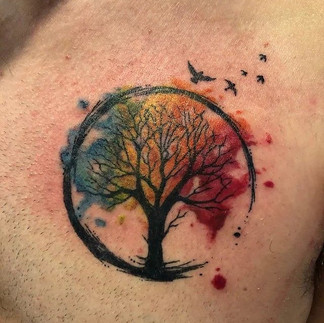




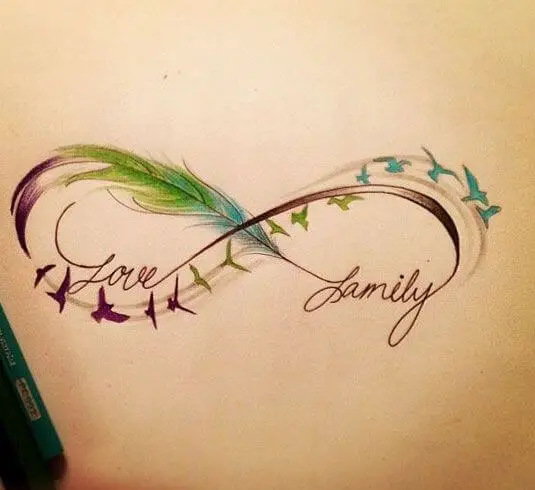


























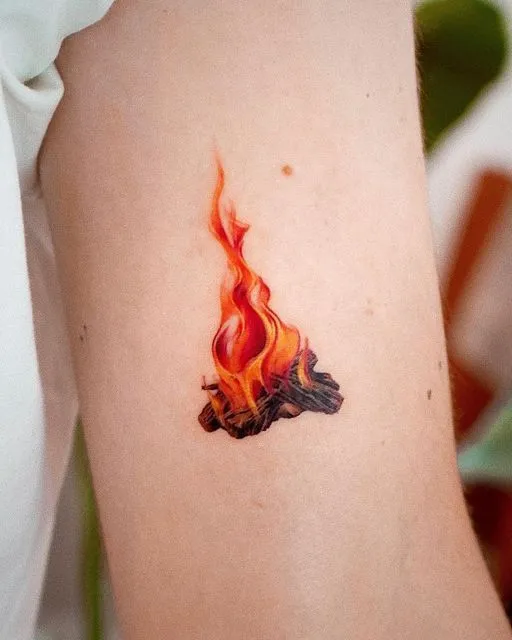
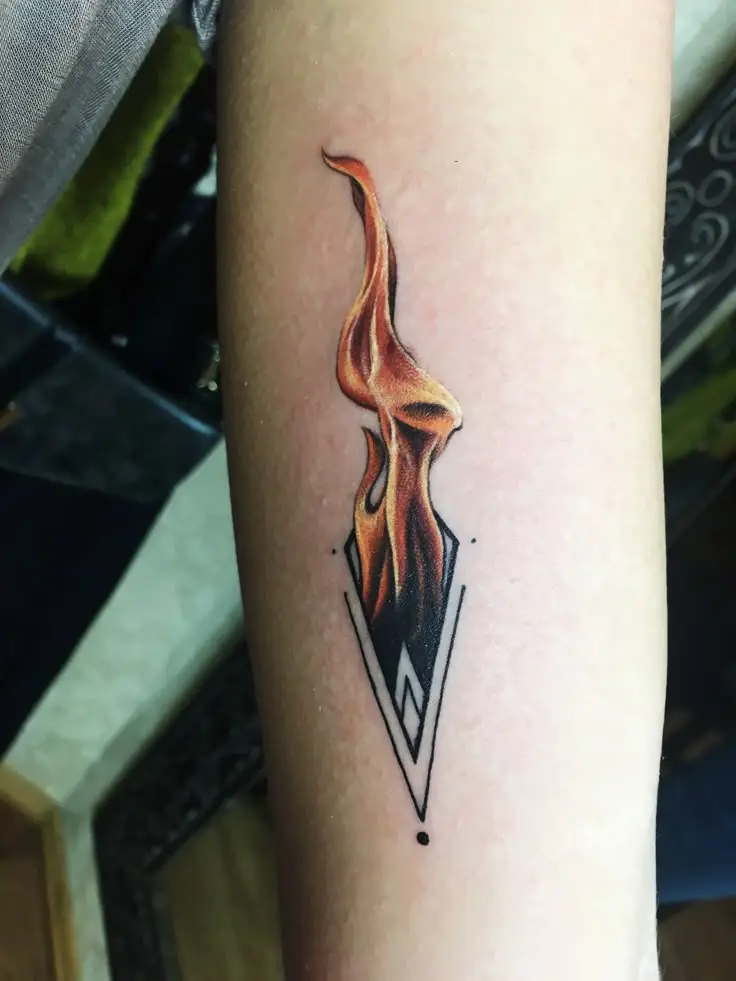
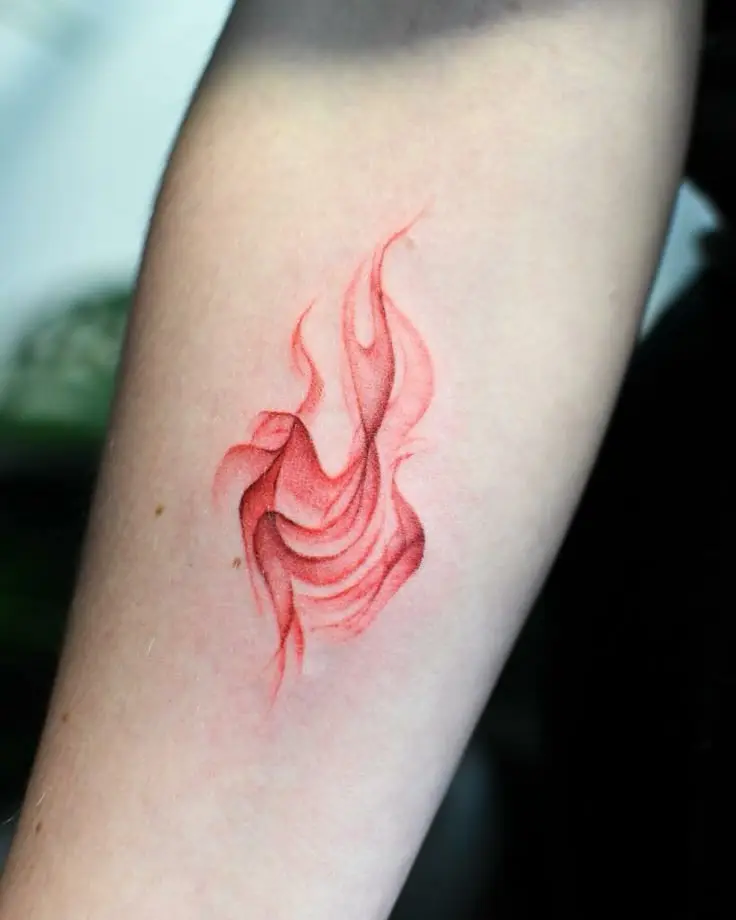






































Comments